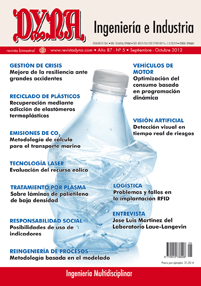POLICIES TO ENHANCE THE RESILIENCE LEVEL IN CASE OF MAJOR ACCIDENTS
Keywords:
Resiliencia, Infraestructura Crítica, Gestión de Crisis, Grandes Accidentes Industriales, Políticas de Mitigación.Abstract
Society’s welfare is very dependent on the effective performance of Critical Infrastructure (CI). Nowadays, CIs constitutes a network of interconnected and interdependent entities what means that a serious event in one CI can originate cascading events in the rest, leading to a serious crisis. A major Industrial accident can be defined as a crisis which unfolds due to an interruption in a CI. Resilience is the intrinsic ability of a system to reduce the failure probability of the system and once the crisis occurs to react to and recover from disturbances at an early stage causing minimal effect and allowing the continuity of operations. For the case of major industrial accidents, we define two system’s resilience levels: the resilience level of the CI (internal resilience) and the resilience level of the society (external resilience). There are several discussions in the literature about the resilience concept, but there is little information about how we can improve it. The purpose of this paper is to provide a set of policies to improve the resilience level. Through the literature review we analyze the resilience concept and propose the most adequate definition for our research. Twelve mitigation policies in order to increase the level of resilience are identified in the workshops with domain experts and finally these policies were eaffirmed by case studiesDownloads
Published
2012-09-03
Issue
Section
ARTICULOS

